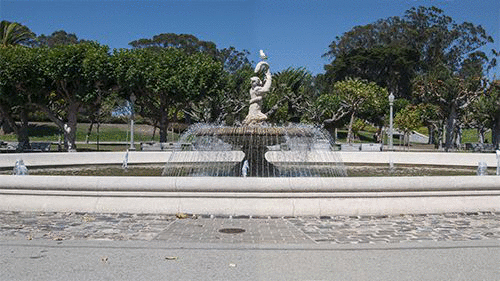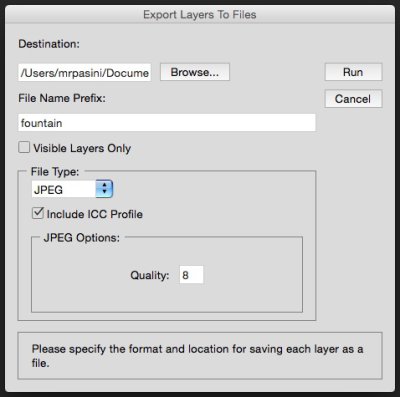Photo Corners headlinesarchivemikepasini.com
![]()
A S C R A P B O O K O F S O L U T I O N S F O R T H E P H O T O G R A P H E R
![]()
Enhancing the enjoyment of taking pictures with news that matters, features that entertain and images that delight. Published frequently.
Animated People Watching




10 September 2015
The attraction of street photography is being able to see in a public moment something private, something revealing. It's as if, looking at the bookshelf, you could read a page of any novel.

Because street photography is also the photography of the anonymous, it isn't the invasion of privacy it might seem. What's revealed isn't something about a particular person but about mankind in general.
All the world's a stage, as someone once put it.
For the photographer, though, it's more like the whole city's a safari. You load up, trek through the asphalt jungle and hunt your prey, hoping to get lucky, to catch the decisive moment. Or, you know, an interesting photo.
But porch stoops and park benches invite another approach. Let the world come to you. Sit in the balcony and enjoy the show as the world wanders across the stage.
Which is what we did the other day after a long walk down the hill to the music concourse in Golden Gate Park where one of the two fountains still springs with life in this drought. The park sits over its own aquifer, fortunately, so it can afford this amusement.
We needed to rest a bit but an idle mind is not something we pack around. So we decided to take out our Nikon D300 and capture whatever walked by.
EXPOSURE
We planned to do this unobtrusively. Let nature take its course without our interference. We just wanted to record it.
We set the 18-200mm zoom lens to 35mm for a normal view on our 1.5x crop factor camera but quickly realized our framing would be approximate, so we cranked it back a bit. We could be a bit off level and survive the crop we'd need to straighten the image.
That wider focal length had another advantage. It meant depth of field was generous. So the autofocus we had to rely on wouldn't be jumping from someone walking in front of us to the seagull perching on the top of the fountain. They'd both be in focus and the lens wouldn't seek when we pressed the Shutter button.
All this was made necessary by our decision to perch the camera on top of our camera bag. Not up at eye level (which would have drawn attention and actually caused some kind souls to stop until we had taken our shot).
We took some test shots, liked what we saw, set the camera down on our bag, which was sitting on our lap, and looked around.
When someone came into view, we snapped the shutter. A little early, a little late. Depended on what we liked about the composition. But it was all intuitive.
We got a couple of shots quickly but then there was a long dry spell before we got another flurry of activity. And then we were done. It either worked or it didn't.
POST PROCESSING
There's more than one way to skin a cat. We tend to concentrate on the simplest way because it can be emulated using any software. Some software is more efficient that other software, certainly, but you can get the job done with anything these days. For the record, we did this in Photoshop CC 2015.
The key to assembling this image was to use software that let us work on an image in layers. Except in this case we were working on a set of images, each on its own layer.
We dragged all our DNG Raw files to Photoshop, which opened them in Adobe Camera Raw. We selected all of them and made our usual basic exposure edits. Working on one image, the edits were applied to all.
Then we opened them in Photoshop as individual files. We started with the first image and straightened it but we didn't crop it yet.
Then we dragged the second image into the first on a layer of its own, reduced Opacity to 50 percent and aligned the image manually. You can let the software handle alignment automatically, but we wanted a hands on approach.
We did that with each image in succession.
When we backed off the focal length at the fountain, we were giving ourselves a margin of error that was easy to see in the Photoshop file. Each straightened image had gaps somewhere. Top, bottom, sides.
We just had to tighten the crop a bit.
You can do this by examining each image in turn and setting a guide inside the image for each side, adjusting the placement of the guide when you get to an image in the sequence that doesn't bleed to the guide.
But with Photoshop CC, we didn't have to be very strict about that. With the Healing Brush we could fill in some missing sky or pavement to save some element on another image in the stack.
With the images edited, straightened and aligned we were ready to export them as individual JPEGs. And Photohop CC makes it easy to export layers as individual files.
Next we used Gifone to create an animated GIF with images displayed at one second each and running in a continuous loop. We could have done this in Photoshop, but as we've explained previously, the Photoshop interface for making GIFs changes continually and we can never remember how to do it.
CONSIDERATIONS
When we sat down on the park bench, we had no intention of doing anything but rest. But the scene in front of us was amusing. We wondered how we might capture it.
A single image wasn't going to do it. Sure, a child chasing a bird around the fountain might work. But there was more than that going on. Each group passing by told a different story, one we would never know the beginning of or ending to.
So we shot a sequence.
But as we were setting up we knew that we wouldn't want to display these as a slide show of individual images. We didn't want to invite that kind of scrutiny. What you could tell looking at them for several seconds wasn't going to be much.
But animating the sequence did the trick. It shows the fountain as a constant and the passing crowd (and seagulls) as actors on the stage.
That's what had amused us, after all.
